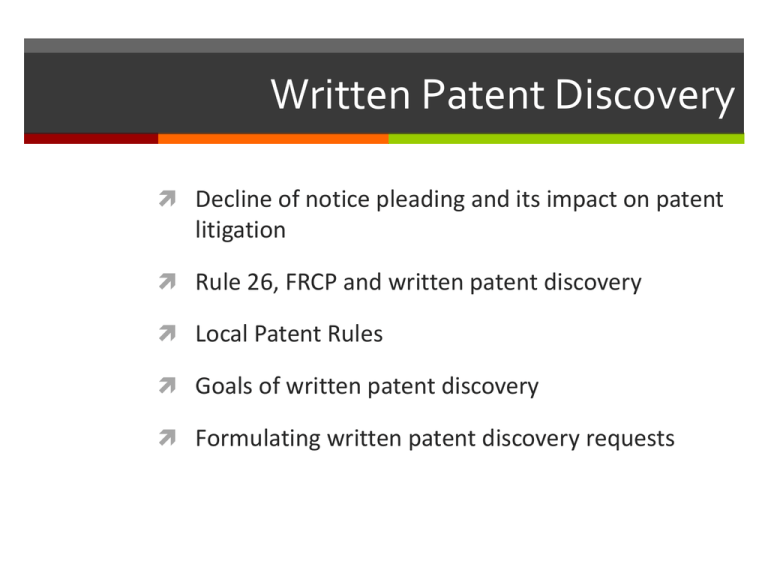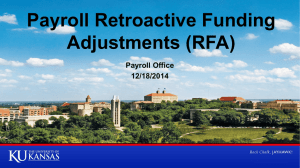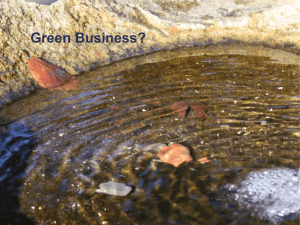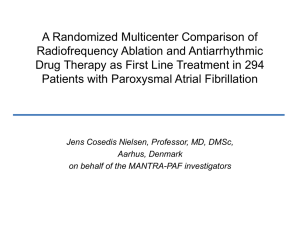Patent Litigation Fundamentals
advertisement

Written Patent Discovery Decline of notice pleading and its impact on patent litigation Rule 26, FRCP and written patent discovery Local Patent Rules Goals of written patent discovery Formulating written patent discovery requests Why the Decline of Notice Pleading? Claims for patent infringement, invalidity, inequitable conduct must satisfy Iqbal and Twombly Under Rule 26, FRCP, pleadings shape discovery Mandatory initial disclosures Rule 26, FRCP Because of the mandatory disclosure of Rule 26, complaint and answer are the parties’ first discovery requests The disclosing party has to give you its “good stuff” – the information it may use to support its claims or defenses Scope of the obligation is directly proportional to the detail and clarity of your allegations The more the ambiguity or vagueness in your pleading, the more room the disclosing party has to avoid producing its “good stuff” Need to balance benefit of free, early discovery vs. risk of prematurely showing cards or advocating ill-conceived position Initial disclosures are designed to provide basic information What they don’t give you: Party’s claim construction Party’s contentions – e.g., infringement and validity The “bad stuff” – the stuff that may hurt disclosing party or help you Local Patent Rules E.g., NDGA LPR’s LPR’s generally address the categories of information not disclosed under Rule 26 Contentions LPR 4.1(b): infringement contentions LPR 4.2: response to infringement contentions LPR 4.3: invalidity contentions Some “bad stuff” from patentee Prior art § 112 defenses Other defenses LPR 4.1(c): patentee’s documents relevant to statutory bars and DOI LPR 6: claim construction contentions and support What’s left? All of defendant’s “bad stuff” Some of patentee’s “bad stuff” Goals of Written Patent Discovery Discovery by plaintiff patentee Learn details of infringing device or process and its development Learn bases for defendant’s defenses and facts that undermine those defenses Discover facts related to damages E.g., defendant’s infringing sales Use information discovered to refine claim construction and develop case theory Goals of Written Patent Discovery Discovery by defendant Learn bases for infringement claim and facts that undermine patentee’s claim Discover facts related to recovery of damages by patentee E.g., manufacturing capacity, license agreements Investigate sources of information related to novelty requirements under § 102 Use information discovered to refine claim construction and develop case theory Formulating Written Discovery Requests Written discovery game plan What about RFA’s? To whom/what is written discovery directed? Court-imposed discovery limits Written Discovery Game Plan Reserve interrogatories for discovering facts Use Rule 26 disclosures, LPR disclosures, and interrogatory answers to identify documents to request Use 30(b)(6) document deposition in conjunction with documents requests to identify relevant documents and confirm they were produced Once you have most of the documents you need, identify individual deponents What About RFA’s? Can be directed to almost any issue Generally, no limitation on number RFA’s can be used at any time RFA’s admitted if recipient does not timely respond Difficult for recipient to be evasive or avoid answering If response evasive, can ask court to rule Once admitted, admission is conclusive Under Rule 37(c), sanctions available What About RFA’s? Examples of use in patent litigation Nonenablement defense “Admit that DeKalb has tried, but failed, to produce fertile, transgenic corn plants for the following cell lines: X, Y, Z, . . .” “Admit that of the 120 cell lines that DeKalb attempted to transform to produce fertile, transgenic corn plants, it only was able to produce fertile transgenic corn plants from 4 of those cell lines.” Infringement claim Admissions that can be used to establish claim coverage Osteotech case below What About RFA’s? Serve RFA’s with companion interrogatory Serve companion document request Example of use of RFA’s from the Osteotech litigation Osteotech RFA’s “RFA No. 52 [53]: Admit that DynaGraft Gel [Putty] has new bone growth-inducing amounts of demineralized osteogenic bone powder.” “Response: Admitted.” Osteotech moved for summary judgment GenSci moved to withdraw its admissions under Rule 36(b) Promote presentation of merits Not prejudice the requesting party But for the RFA’s, summary judgment would not have been granted To Whom/What Is Written Discovery Directed? Parties – filling the gaps Claim construction Information that you expected the other party to disclose, but it didn’t Information the other party might consider to be “bad stuff” Third parties Typically takes the form of subpoena duces tecum Try to take discovery from persons with knowledge of relevant prior art or the use patentee made of his invention before the critical date Service providers (informal) Court-Imposed Discovery Limits Be aware of written discovery limits established in Rule 26(f) discovery order Limits on # of interrogatories Limits on # of document requests Limits on # of depositions Possibly limits on # of RFA’s











